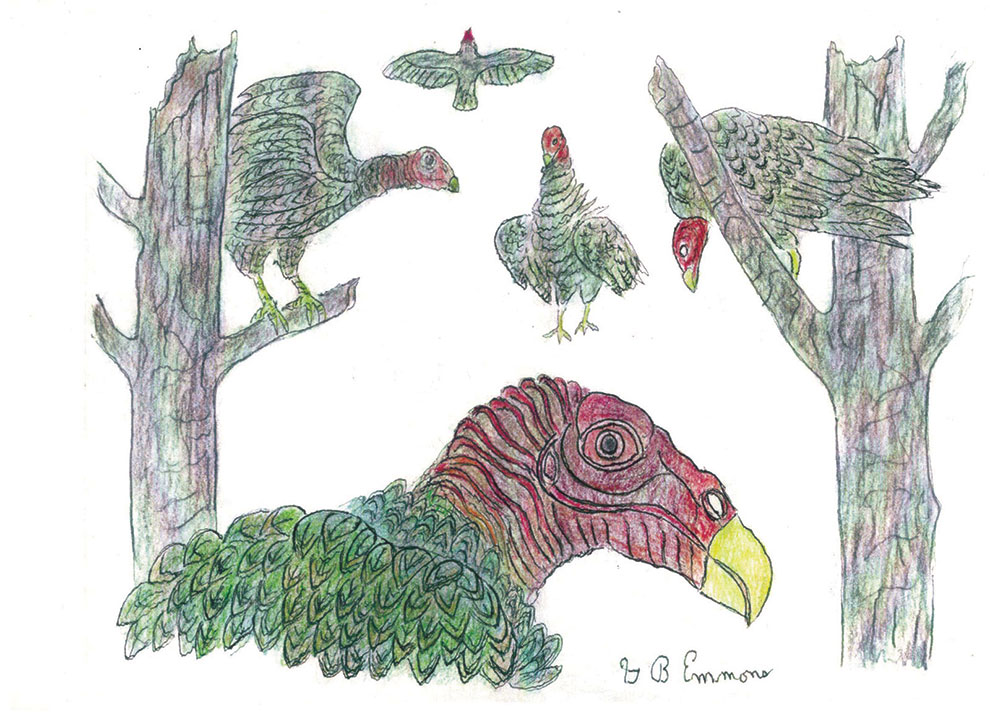On Earth Day and all this week, Spring was springing, birds were singing, and children were helping to clean up the roadsides, while turkey buzzards were circling overhead as scavengers to rid of dead bodies killed by speeding traffic.
The arrival of turkey vultures soaring over highways is usually one of the first signs of spring, when they suddenly appear at dawn, rising up on warming thermals to circle overhead and visually announce the aerial winged demonstration of a new solar season.
In flight, they are majestic but unsteady soarers with very few wing beats, easy to identify. Look for them gliding relatively low to the ground, sniffing for carrion that can be perceived for a mile or more. You may also see them gathered by the roadside around roadkill of dumpsters, much like volunteer workers assembled for spring cleanup.
The timing of the vulture’s return each year bears some semblance to the historic clockwork of the return each year of the swallows of Capistrano. But the vultures may travel all the way from Central America without finding food on much of the way. Navigation may be assisted by a landscape map in their head, guided by signals of Earth’s magnetic field on the way down and back. They soon find a variety of different opportunities here besides dead carrion by the roads, but also decaying vegetable matter near farmlands, live insects, or dead fish from drying ponds or shallow tidal flats. However, vultures differ greatly from other raptor birds by using their own scenting powers rather than sight or hearing, as in hawks and owls.
Like many other species of birds, they do not seem to mate for life if one of a couple is killed. Vultures pair up by gathering in a close circle next to each other to hop around in a dance, followed by an aerial demonstration of diving and flapping toward each other to solidify the ceremonial commitment.
This year, Earth Day week is again a natural opportunity to learn about the living species of the natural world, each of which has its own story to tell. The Harvard Museum of Natural History has invited children and their advisors to celebrate the planet Earth through the creation of their own stories of wildlife that are involved in their studies. Turkey vultures circling on Earth Day is a natural combination of environmental awareness to write about and celebrate annually as a holiday for the planet we live on to be appreciated.
By George B. Emmons
